When it comes to humanity’s response to climate change, the focus on carbon dioxide is sucking all the oxygen out of the room.
Greenhouse gas emissions aren’t the only reason why global temperatures are creeping upward. The climate is also influenced by changes in the Earth’s orbit and rotation; these are thought to have been the primary cause of previous ice ages. Variations in solar activity and changes in the Earth’s reflectivity also have an impact.
We have no control over our planet’s orbit or the output of the sun. The latter fluctuates according to an 11-year cycle and has shown no overall increase since accurate monitoring started in 1978. But there’s no doubt that human activities like construction, deforestation and farming alter the percentage of sunlight the Earth’s surface absorbs and the percentage that’s reflected.
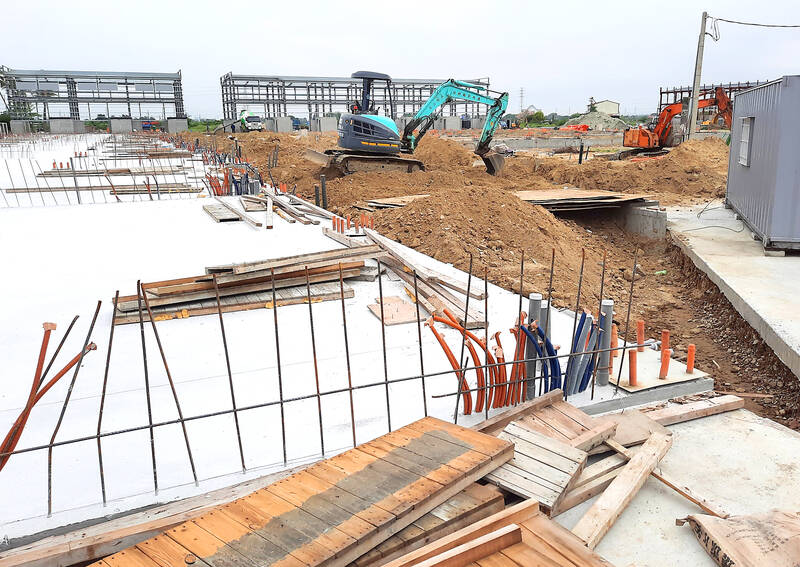
Photo: Steven Crook
Every surface feature has an albedo of between 0 (meaning all of the solar radiation that hits it is absorbed) and 1 (100 percent of the radiation is reflected). Asphalt roads and oceans have low albedo values. Because they sequester carbon, forests are often thought of as helpful in the fight against climate change. They are, yet in terms of albedo — 0.15 to 0.18 for areas of deciduous trees, 0.08 for 0.15 for coniferous woodlands — they don’t contribute much to the effort.
Grasslands and sandy deserts are more reflective than trees or concrete. The albedo of snow and ice is usually over 0.5 and sometimes above 0.9. This is why the loss of Arctic ice and declining snow cover in places like Siberia is so alarming. As these white surfaces shrink, not only will sea levels rise, but the Earth will absorb more solar radiation, triggering a doom loop of additional melting and further warming.
COMPLEX LOCAL EFFECTS
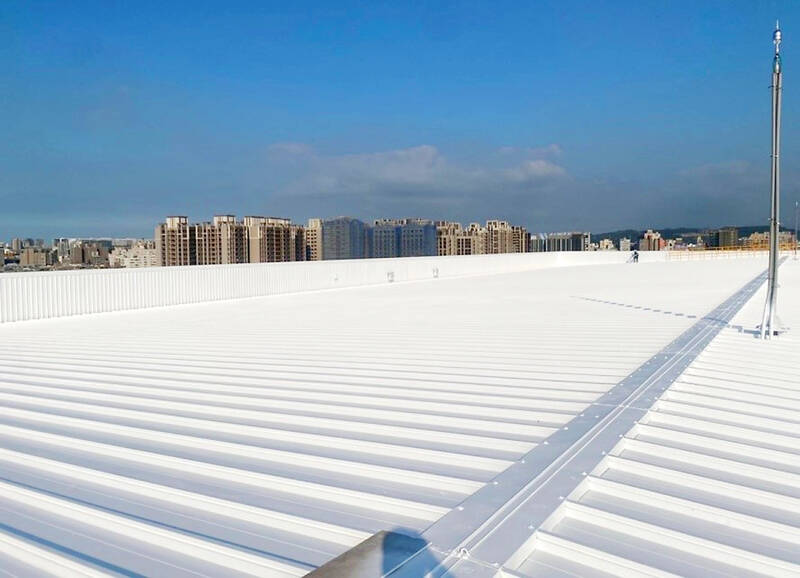
Photo: Steven Crook
Persuading individuals to voluntarily curtail their carbon emissions isn’t easy, in part because the benefits are barely perceptible at a local level. By contrast, steps taken to increase albedo are likely to have an immediate and noticeable impact. Enhancing the albedo of a property in Taiwan lowers indoor temperatures, cuts utility bills — because far more is spent on cooling than on heating — extends the life of air-conditioning units, and reduces the amount of waste heat entering the surrounding environment.
Roof coatings designed to reduce heat absorption are inexpensive and easy to apply. An Indian manufacturer claims that one of its products reflects 90 percent of infrared rays and 85 percent of ultraviolet rays and lasts for five or six years. The ex-works price of enough paint to cover 30 square meters is just NT$1,800.
Taiwan’s USI Corp says its Superior Sun-Shielding Coating offers 90-percent total solar reflection. The coating has been applied to buildings, pipes and chemical storage tanks belonging to USI and its affiliates. The product is affordable, yet the coating isn’t in widespread use, the company says.
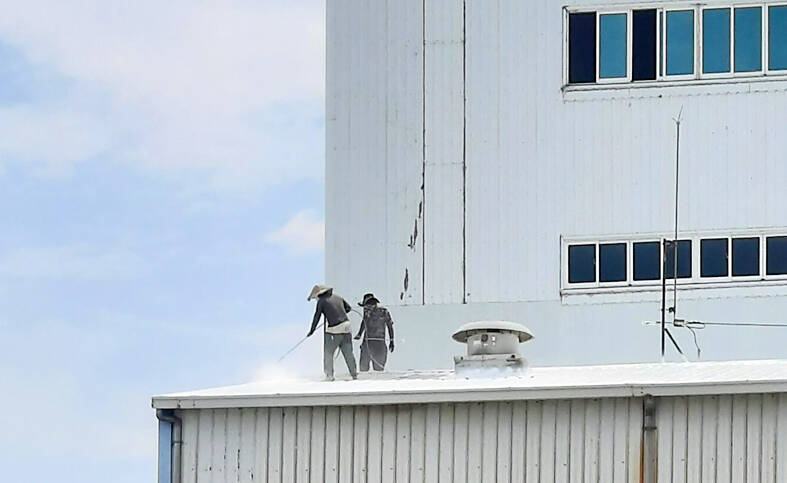
Photo: Steven Crook
Trying to boost albedo across a neighborhood or a city is much more complicated, however. Part of the problem is that, except when the sun is directly overhead, solar radiation doesn’t come straight down from the sky. As a consequence, the fraction that’s reflected rebounds at an angle.
A 2020 paper published by Brunel University in the UK explains that, in urban areas incoming radiation bounces between building facades, roads and other features. At each collision, “a portion is absorbed by the incident surface while another portion is reflected… The effectiveness of high albedo materials in improving outdoor thermal comfort in complex urban geometries is still under investigation and it may vary depending on urban geometry and latitude.”
In Taipei, applying reflective paint to the roof of a house just south of a 10-floor apartment block would cool the former, yet at certain times of the year it’d also increase the heat load on some of the apartments. Their occupants might also complain about an uncomfortable glare.
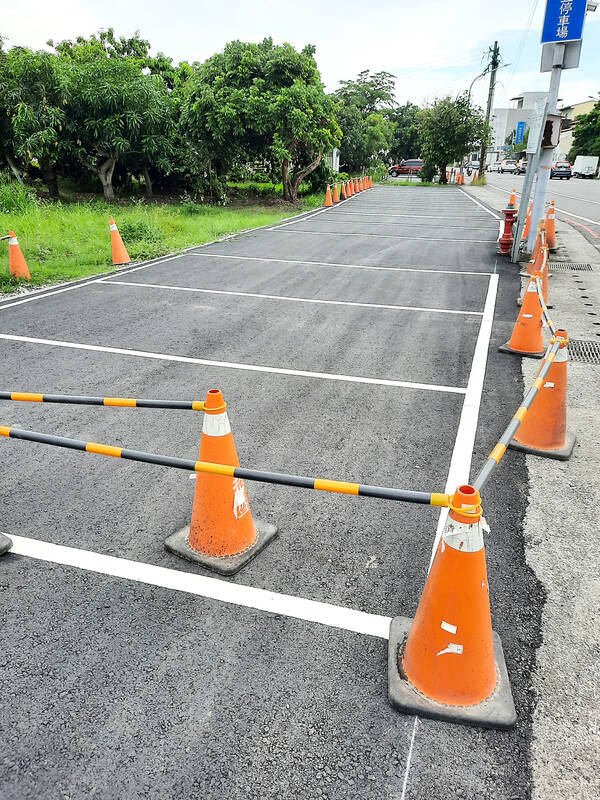
Photo: Steven Crook
New Taipei City Government’s Cool Roof Demonstration and Promotion Plan lists enhancing solar reflectivity and thermal emissivity as just one possible solution for buildings that roast when the sun’s out. Others are rooftop gardens (see “Why you should turn your roof into a leafy paradise” in the Oct. 13, 2021 issue of this newspaper), insulation and installing photovoltaic (PV) panels. In addition to generating clean electricity, PV systems cool roofs by blocking solar radiation.
Rather than incentivize the use of highly reflective materials, Kaohsiung City Government’s Green Building Autonomous Ordinance of 2012 and the Kaohsiung Housing Project initiated in 2014 stress greening upper floors and roofs so as to reduce heat gain. Wide balconies are encouraged, as these shade building shells, reducing heat load.
The US Green Building Council’s LEED rating system awards points for highly reflective roofs. Taiwan’s EEWH sustainable-architecture certification system focuses instead on the thermal transmittance of roofs, the rate at which heat is transferred through solid material, instead of albedo.
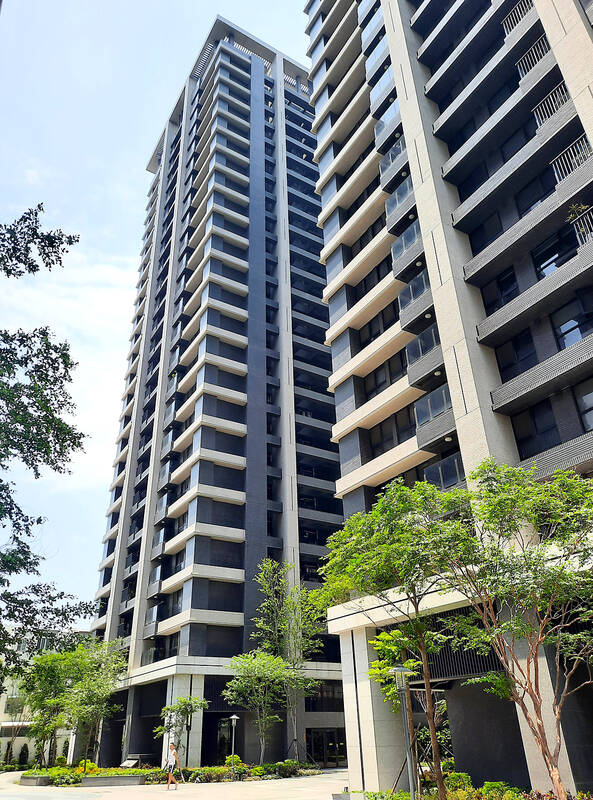
Photo: Steven Crook
HOT BLACKTOP
The authorities should assess the claims made in a 2008 article titled “Environmental and Cost Benefits of High Albedo Concrete” — even though it was authored by a senior official in a US concrete industry association — and reconsider the use of asphalt on roads that are exposed to direct sunlight for much of the day.
According to the article, roads or parking lots surfaced with concrete rather than asphalt can mitigate global warming in two ways.
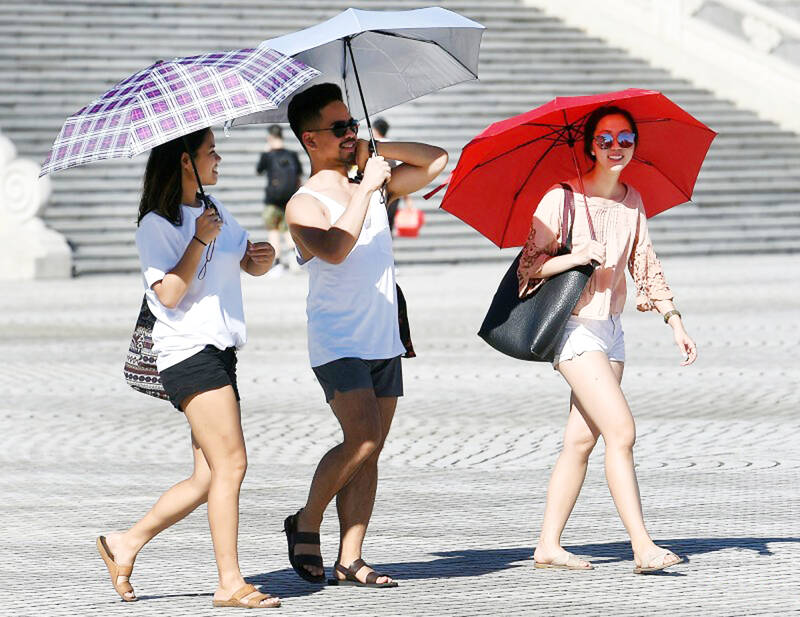
Photo: Chu Pei-hsiung, Taipei Times
On top of concrete absorbing less solar radiation, its greater reflectivity means fewer lights are needed to achieve the same level of illumination. (This is one reason why roads within tunnels are often concrete; fire safety is another.) Using concrete instead of blacktop could result in energy savings of up to 24 percent. Because Taiwan’s power grid is still a very long way from carbon neutrality, this would mean burning less coal and gas. Fewer streetlights would also bring down maintenance costs.
Yet it’s still unclear if this justifies ditching asphalt. According to calculations published in Canada in 2010, the 50-year life-cycle greenhouse gas emissions resulting from a concrete road surface are triple those of an equal area of blacktop. However, a 2020 conference paper by Indonesian researchers suggests that asphalt results in 74 percent greater emissions than concrete.
Road coatings that reflect a considerable amount of heat, but don’t dazzle road-users with whiteness, have been developed, but cost is an issue. Plain asphalt is cheaper than concrete, and spending more on road surfaces could mean less money for other climate-friendly projects.
RADICAL IDEAS
Taiwan has around 200,000 hectares of fallow agricultural land that could be planted with high-albedo crops, such as plants genetically modified (GM) so their leaves are more reflective. But Taiwan doesn’t permit GM crops; even if it did, the country may not have enough water to sustain them.
Oceans cover more than 70 percent of the Earth’s surface, and in Kim Stanley Robinson’s optimistic climate-change novel The Ministry for the Future, dyeing the sea yellow is one action taken to slow global warming. This adjusts the albedo “from 0.06 for open water… to 0.47 for yellow water. The amount of energy thus bounced back out into space was simply stupendous, the benefit-to-cost ratio off the charts.”
As of spring this year, there aren’t many indications that humanity will meet the goals of the Paris Agreement and limit global temperature rise to 1.5 degrees Celsius. It’s quite possible we’ll resort to coloring the ocean, GM trees or other drastic interventions. Some people will deplore these measures as abominable distortions of nature, and reasonably ask how we ever got ourselves into this situation.
Steven Crook, the author or co-author of four books about Taiwan, has been following environmental issues since he arrived in the country in 1991. He drives a hybrid and carries his own chopsticks. The views expressed here are his own.
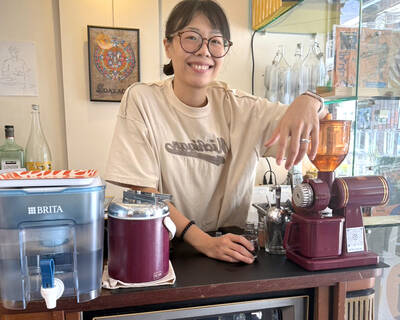
Cheng Ching-hsiang (鄭青祥) turned a small triangle of concrete jammed between two old shops into a cool little bar called 9dimension. In front of the shop, a steampunk-like structure was welded by himself to serve as a booth where he prepares cocktails. “Yancheng used to be just old people,” he says, “but now young people are coming and creating the New Yancheng.” Around the corner, Yu Hsiu-jao (饒毓琇), opened Tiny Cafe. True to its name, it is the size of a cupboard and serves cold-brewed coffee. “Small shops are so special and have personality,” she says, “people come to Yancheng to find such treasures.” She
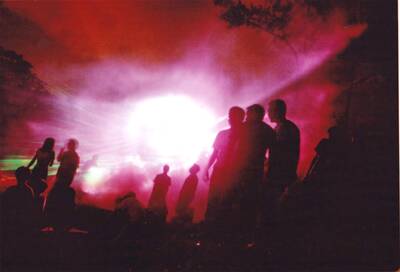
In July of 1995, a group of local DJs began posting an event flyer around Taipei. It was cheaply photocopied and nearly all in English, with a hand-drawn map on the back and, on the front, a big red hand print alongside one prominent line of text, “Finally… THE PARTY.” The map led to a remote floodplain in Taipei County (now New Taipei City) just across the Tamsui River from Taipei. The organizers got permission from no one. They just drove up in a blue Taiwanese pickup truck, set up a generator, two speakers, two turntables and a mixer. They

Former Chinese Nationalist Party (KMT) chairwoman Hung Hsiu-chu’s (洪秀柱) attendance at the Chinese Communist Party’s (CPP) “Chinese People’s War of Resistance Against Japanese Aggression and the World Anti-Fascist War” parade in Beijing is infuriating, embarrassing and insulting to nearly everyone in Taiwan, and Taiwan’s friends and allies. She is also ripping off bandages and pouring salt into old wounds. In the process she managed to tie both the KMT and the Democratic Progressive Party (DPP) into uncomfortable knots. The KMT continues to honor their heroic fighters, who defended China against the invading Japanese Empire, which inflicted unimaginable horrors on the
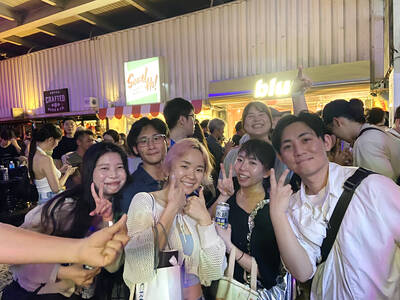
Hannah Liao (廖宸萱) recalls the harassment she experienced on dating apps, an experience that left her frightened and disgusted. “I’ve tried some voice-based dating apps,” the 30-year-old says. “Right away, some guys would say things like, ‘Wanna talk dirty?’ or ‘Wanna suck my d**k?’” she says. Liao’s story is not unique. Ministry of Health and Welfare statistics show a more than 50 percent rise in sexual assault cases related to online encounters over the past five years. In 2023 alone, women comprised 7,698 of the 9,413 reported victims. Faced with a dating landscape that can feel more predatory than promising, many in